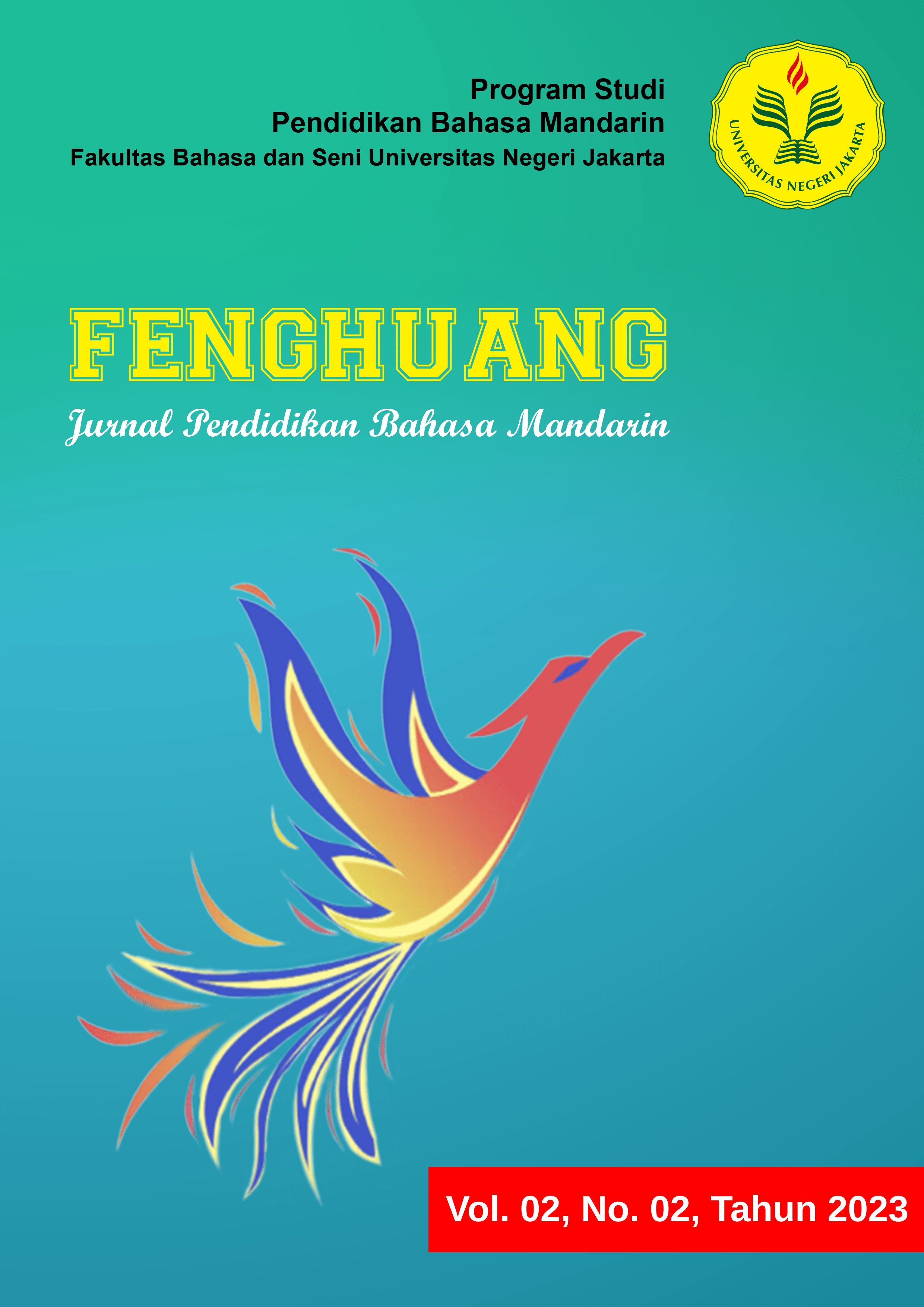Analisis Isi Terjemahan Teks Informatif Bahasa Mandarin
DOI:
https://doi.org/10.21009/Fenghuang.202.05Keywords:
Equivalence, Translation, Informative Text, MandarinAbstract
In today's era of globalization, there has been an explosion of information throughout the world. The implication of the information explosion phenomenon is the increasing demand for qualified translators. Before translating, a translator must know the theories about translation, especially regarding the type of equivalence of translation, thereby the translation is more accurate and deviations in translation can be avoided. One of the aspects of these is the type of equivalence in translation.
This research aims to find out the number of formal equivalences, dynamic equivalences, and deviations in the results of translations of Mandarin informative texts by PSPBM UNJ students class of 2015. Starting from the word level equivalence, above the word level equivalence and grammatical equivalence. This research also describes various findings related to the types of translation equivalences that exist in the translations. The data in this research is limited to words, phrases, clauses, and sentences translated by PSPBM UNJ students towards one of the texts given in the Mandarin-Indonesian Translation course. This research use content analysis method. The results of the analysis show that equivalence of translation at the word level
reaches 81.8%; at the level above the word level reaches 75% and for grammatical equivalence reaches 47.2%. Based on the findings of this research, the authors found that although the results of the 2015 class of PSPBM UNJ students' translations were mostly equivalent, there are still deviations in conveying information into target language. The results of this research can be used to broaden the reader's insight related to translation theory, especially regarding equivalence in translation.




